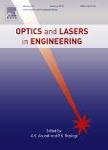版权所有:内蒙古大学图书馆 技术提供:维普资讯• 智图
内蒙古自治区呼和浩特市赛罕区大学西街235号 邮编: 010021

作者机构:Nanchang Univ Sch Informat Engn Nanchang 330031 Peoples R China Nanchang Univ Jiangxi Prov Key Lab Adv Signal Proc & Intelligent Nanchang 330031 Peoples R China Jiangxi Commun Terminal Ind Technol Res Inst Co Lt Jian 343121 Peoples R China
出 版 物:《OPTICS AND LASERS IN ENGINEERING》 (Opt Lasers Eng)
年 卷 期:2025年第187卷
核心收录:
学科分类:070207[理学-光学] 07[理学] 08[工学] 0803[工学-光学工程] 0702[理学-物理学]
基 金:National Natural Science Founda-tion of China [62105138, 62122033, 62463020] Science and Technology Project of Jiangxi province [20242BAB20040, 20242BCC32016, 20232ACC01007, 20232ABC03A09] Ji'an Sci-ence and technology project [20233TGV06020]
主 题:Fluorescence molecular tomography Priori learning Image reconstruction Score-based generative model
摘 要:Fluorescence Molecular Tomography (FMT) imaging is a non-invasive quantitative detection technique that locates and quantifies fluorescent molecular probes in biological tissue. However, due to the light scattering effect and the ill-posed nature of the inverse problem, it is difficult to accurately reconstruct the fluorescence distribution. Traditional iterative reconstruction methods rely on the selection of regularization parameters, and data-driven deep learning methods have insufficient interpretability. In order to improve the imaging quality, fluorescence molecular tomography via score-based generative model (FTSG) is proposed. Prior information about the fluorescence target distribution is extracted via score-based generative model, which is used as a regularization term constraint for an iterative process based on the physical model. FTSG is validated through simulations and experiments using fluorescent targets with different radii and edge-to-edge distances. Compared with traditional methods, FTSG offers better resolution and reconstruction quality. This method can effectively distinguish two fluorescent targets with an edge-to-edge distance of 1 mm.